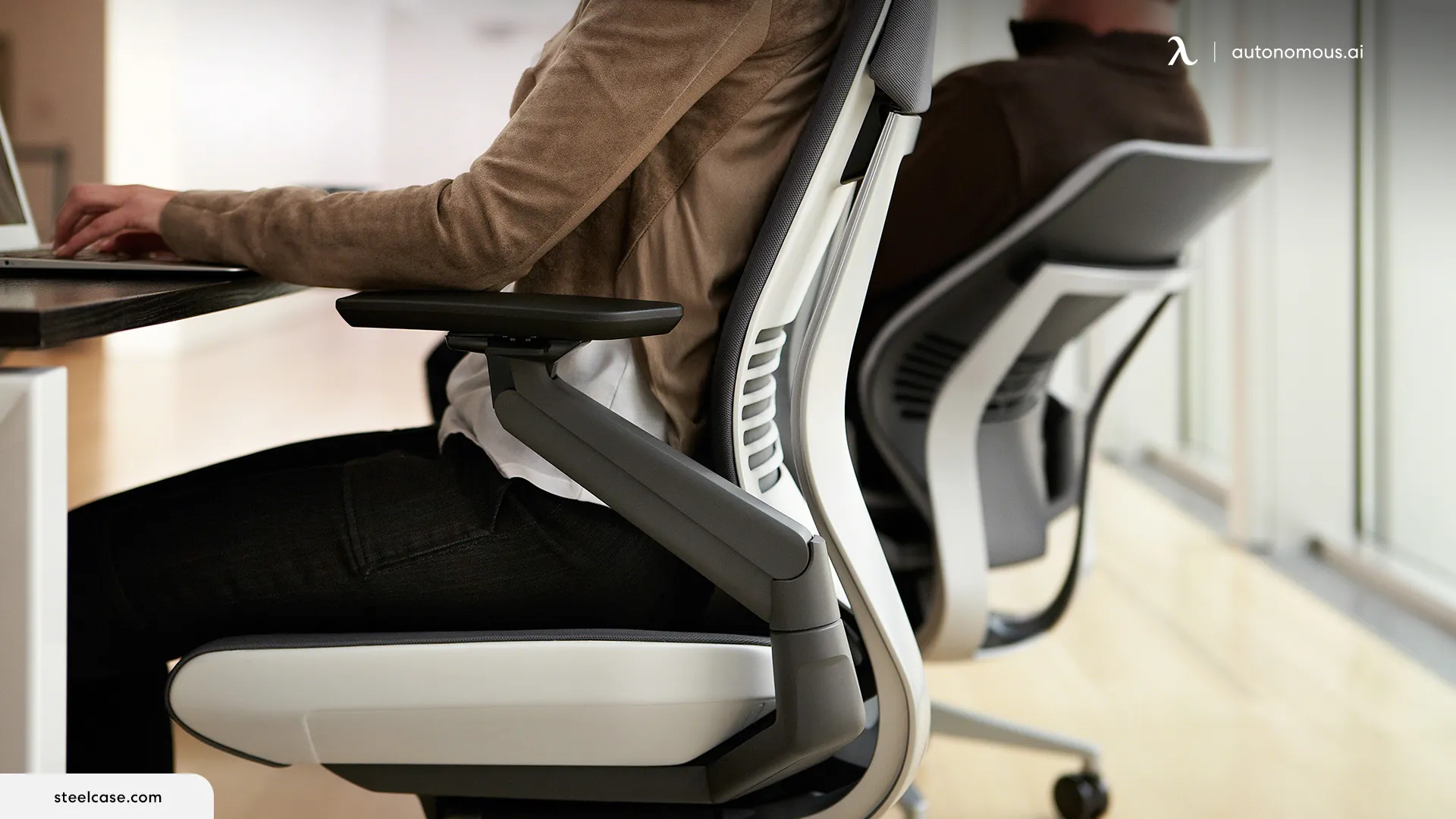Steelcase Gesture Chair: Steelcase Gesture Office Chair Review


Prepare yourself for a deep dive into the world of ergonomic seating, specifically the Steelcase Gesture chair. We’ll be dissecting its design, comfort features, and comparing it to a worthy competitor, all with a dash of witty observation, naturally.
Ergonomic Features and Comfort
The Steelcase Gesture isn’t just a chair; it’s a meticulously engineered marvel of ergonomic design. Its genius lies in its adaptability to various postures. The dynamic lumbar support, unlike the rigid backrests of chairs past, moves with you, providing consistent support whether you’re leaning forward intensely (perhaps wrestling with a particularly stubborn spreadsheet) or lounging back in a moment of well-deserved repose. The armrests, a crucial component often overlooked, are 3D adjustable – rotating, pivoting, and sliding to accommodate diverse arm positions, ensuring your elbows are always perfectly cradled. The seat pan itself is generously proportioned and offers a surprising amount of give, preventing that dreaded pressure point discomfort after hours of use. Adjustability is king here, with height, depth, and tilt settings allowing for personalized comfort tailored to your unique anatomy.
Ergonomic Comparison with a Competitor
Let’s pit the Gesture against a formidable opponent, say, the Herman Miller Aeron (a similarly priced high-end option). While both are ergonomic powerhouses, their approaches differ. The Aeron, with its iconic mesh back, prioritizes breathability and a more minimalist aesthetic. The Gesture, on the other hand, offers a more substantial, enveloping feel, perhaps better suited to those who prefer a more supportive and less airy seating experience. The Gesture’s armrests provide a broader range of motion, offering superior support for those who frequently use their arms while seated. The Aeron’s adjustability is excellent, but the Gesture arguably offers more intuitive and comprehensive adjustments. Ultimately, the “better” chair depends on individual preference, but the Gesture’s emphasis on adaptable support gives it a distinct advantage for users who require more robust postural support.
Materials and Their Impact
The materials used in the Steelcase Gesture contribute significantly to both its durability and comfort. The following table details the key materials and their properties:
| Material | Location | Properties |
|---|---|---|
| High-density polyurethane foam | Seat Cushion | Provides excellent support and comfort, resists compression over time. Think of it as the luxurious, supportive embrace of a well-trained hugger. |
| LiveBack™ Technology (polyurethane foam and steel) | Backrest | Dynamic lumbar support that moves with the user, offering consistent support in various postures. It’s like having a personal chiropractor built into your chair. |
| Aluminum | Base, Armrests | Lightweight yet incredibly strong and durable. It’s the silent workhorse ensuring longevity and stability. |
| Fabric/Leather (depending on model) | Upholstery | Provides breathability and comfort (fabric) or a premium look and feel (leather). Your choice of comfortable sophistication. |
Steelcase Gesture Chair: Steelcase Gesture Office Chair Review


Prepare yourself for a deep dive into the surprisingly robust world of the Steelcase Gesture chair. We’re not just talking about aesthetics here (though it *is* a looker); we’re dissecting the very bones of this ergonomic marvel, examining its construction with the precision of a seasoned furniture pathologist. Buckle up, it’s going to be a bumpy – yet informative – ride.
Build Quality and Durability
The Steelcase Gesture isn’t built for a quick fling; it’s designed for a long-term commitment. Its frame, a sturdy aluminum alloy, is the backbone of the operation, providing a surprisingly lightweight yet incredibly strong foundation. The mechanisms, a symphony of carefully engineered parts, allow for smooth, intuitive adjustments. These aren’t your grandma’s rickety office chair levers; these are precision instruments designed to withstand years of daily use (and the occasional enthusiastic lean-back). The upholstery, typically a high-quality fabric or leather, is chosen for both comfort and resilience. We’re talking about materials that can handle the daily grind – think spilled coffee, errant crumbs, and the occasional accidental nap.
Expected Lifespan and Wear Points
Under typical office use, a Steelcase Gesture chair can reasonably be expected to last for a decade or more. However, like any piece of furniture, it has its vulnerabilities. The most common wear points are the armrests (particularly the pads), the casters (those little wheels), and the upholstery itself. Regular maintenance, such as lubricating moving parts and cleaning the upholstery, can significantly extend the lifespan. Consider it a preventative health plan for your chair; a little TLC goes a long way. Imagine a well-maintained Gesture chair, still going strong after 15 years, a testament to its robust build and the owner’s diligent care. This contrasts sharply with the less durable chairs that have to be replaced much sooner, resulting in both cost and environmental impact.
Durability Comparison, Steelcase gesture office chair review
Let’s compare the Gesture’s durability to a hypothetical competitor, the “OfficeMax Comfort-Plus 5000” (a chair entirely of our imagination, but one that represents a typical mid-range office chair).
| Component | Steelcase Gesture | OfficeMax Comfort-Plus 5000 |
|---|---|---|
| Frame | Aluminum alloy – exceptionally durable, resistant to bending and breaking. Expected lifespan: 15+ years. | Steel – prone to rust and bending over time. Expected lifespan: 5-7 years. |
| Mechanism | Smooth, precise adjustments; high-quality components. Expected lifespan: 12+ years. | Less precise adjustments; plastic components prone to wear and tear. Expected lifespan: 3-5 years. |
| Upholstery | High-quality fabric or leather; resistant to stains and wear. Expected lifespan: 8+ years with proper care. | Lower-quality fabric; prone to fading, tearing, and staining. Expected lifespan: 2-4 years. |
| Casters | Durable, smooth-rolling casters; easily replaceable. Expected lifespan: 5-7 years. | Cheap plastic casters; prone to sticking and breaking. Expected lifespan: 1-2 years. |
